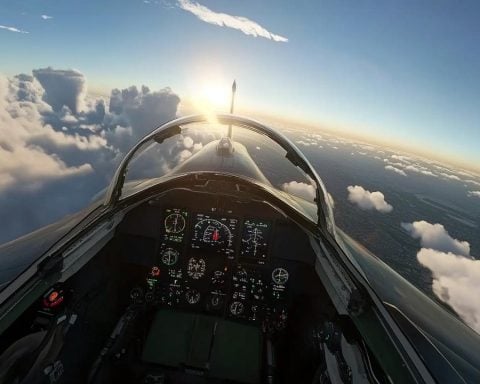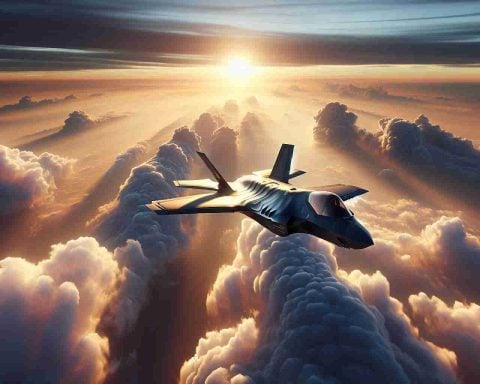Iran’s Air Force Chief, Brigadier General Hamed Wahidi, recently landed in Islamabad to discuss a potential military collaboration. He was welcomed following an invitation from Pakistan’s air force leadership. The visit signifies growing defence interest between the two neighbouring countries and involves high-profile talks.
Upon arrival at Noor Khan Air Base, General Wahidi and his delegation participated in the Indus Shield military exercises at Moshav Air Force Base. Key discussions with Pakistan Air Force Chief, Marshal Zaheer Ahmed Babar, centred around the possibility of Iran acquiring the JF-17 Thunder Block III jet. Iran’s interest in this jet follows a halted deal with China to acquire the Chengdu J-10C fighter jets due to financial disagreements.
Iran, seeking to modernise its air force amid regional tensions, has turned its focus to acquiring modern aircraft like the Russian Su-57 and potentially the JF-17, jointly developed by Pakistan and China. A successful acquisition could see Iran’s fleet bolstered by 60-70 advanced fighters.
The JF-17 Thunder, known for its cost-effectiveness and advanced technologies, is capable of Mach 1.6 speeds and has a combat radius of 1,200 kilometres. It’s equipped with state-of-the-art avionics and weapon systems, allowing for versatile combat roles.
While the JF-17’s potential sale to Iran could enhance Pakistan’s defence export profile, the transaction is laden with geopolitical complexities. Existing sanctions on Iran and the delicate balance Pakistan maintains with China and the U.S. could influence the feasibility of the deal.
Pakistan must carefully evaluate strategic implications, as the defence landscape continues to evolve in this geopolitically sensitive region.
Unveiling the Potential Impact of Iran-Pakistan Military Collaboration on Global Tensions
Expanding Horizons: The Intricacies of Iran-Pakistan Military Ties
The evolving military rapport between Iran and Pakistan highlights a shifting dynamic in a geopolitically sensitive region. As both nations deliberate over the acquisition of the JF-17 Thunder Block III jet, the deeper implications of this possible defence cooperation spur intrigue across international communities. While the core focus remains on enhancing military capabilities, the ripple effects extend far beyond immediate defence concerns.
A Closer Look at Regional Dynamics and Global Relations
The Iran-Pakistan dialogue over military procurement comes at a time when both countries are adjusting to changing security environments. For Iran, the upgrade is crucial as it navigates ongoing sanctions and seeks advanced fighters to modernise its fleet amidst regional tensions. The potential acquisition of the JF-17 from Pakistan presents an alternate route following the stalled transaction with China for the Chengdu J-10C due to financial constraints.
On a broader scale, this collaboration could recalibrate military and economic relations in South Asia and the Middle East. Other regional actors, including Saudi Arabia and the broader GCC nations, are likely observing these developments closely, given existing rivalries and geopolitical interests.
Geopolitical and Economic Considerations: A Double-Edged Sword
Engaging in military deals with Iran introduces a host of advantages and challenges for Pakistan:
– Advantages:
– Economic Opportunities: If finalised, the deal could solidify Pakistan’s burgeoning military export industry, potentially boosting national revenue.
– Regional Influence: By deepening ties with Iran, Pakistan may exert greater diplomatic influence in the Middle East, enhancing its strategic importance.
– Disadvantages:
– International Sanctions: Navigating existing sanctions on Iran presents a significant hurdle. Any misstep could invite punitive actions from global powers, particularly the United States.
– Diplomatic Strain: Balancing relations with China and the U.S., while engaging Iran poses a diplomatic conundrum. Pakistan must tread carefully to maintain alliances without alienating key partners.
Implications for Citizens and Communities
The ramifications of such military collaboration aren’t confined to international corridors. Local communities, too, feel the impact as military spending often diverts resources away from critical public services. Meanwhile, heightened defence collaborations could either foster a sense of national pride or breed anxiety about potential regional conflict escalation.
Moreover, defence industries involved in such deals may see job creation and technological growth, catalysing economic activity in specific sectors. However, increased focus on military expansion can also raise concerns about prioritising defence over developmental needs such as education, healthcare, and infrastructure.
Is the JF-17 Acquisition the Right Move for Iran?
Ultimately, Iran faces the strategic question of whether acquiring the JF-17 is the optimal choice. The jet’s combat versatility and cost-effectiveness make it an appealing option, especially as Iran seeks to modernise its outdated fleet. Yet, Iran must consider whether this acquisition aligns with its longer-term military needs and geopolitical aspirations.
Conclusion
Iran’s possible acquisition of the JF-17 Thunder from Pakistan is a development that extends beyond simple military enhancement. It encapsulates a web of economic opportunities, diplomatic puzzles, and regional power shifts. As both nations navigate these complex waters, the global community watches closely, aware that such collaborations can reverberate far beyond national borders.
For more insights into global military relations, check these resources: U.S. Department of Defense, Janes, International Institute for Strategic Studies.


















